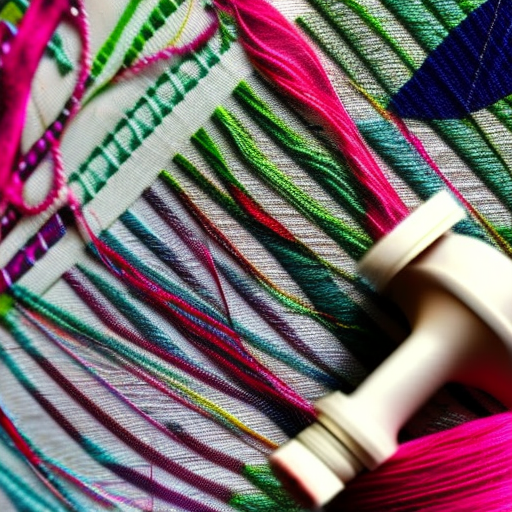
When it comes to sewing, it can be frustrating when the thread starts skipping, causing uneven stitches or even
completely ruining your project. To understand and troubleshoot why this happens, it is essential to know the common
causes behind thread skipping. By identifying the root cause, you can take appropriate measures to prevent it from
happening and enjoy seamless sewing experiences.
Improper Thread Tension
One possible cause of thread skipping is improper thread tension. When the thread tension is too tight or too loose,
it affects the interaction between the upper and lower threads, resulting in skipped stitches. Correct tension is
crucial for balanced and well-formed stitches. If you notice skipped stitches, try adjusting the thread tension on
your sewing machine. It may require some trial and error to find the optimal tension for your specific fabric and
thread combination.
Dull or Incorrect Needle
Another common culprit is a dull or incorrect needle. Needles can become dull over time or may not be suitable for
the fabric you’re working with. Using the wrong needle size or type can cause the thread to skip. Ensure that you are
using the appropriate needle for your fabric, and replace it regularly, especially when it shows signs of dullness or
damage.
Misaligned Needle
A misaligned needle can also cause skipped stitches. If the needle is not inserted correctly or not in its proper
position, it may fail to catch the bobbin thread, leading to skipped stitches. Ensure that you properly insert the
needle according to your sewing machine’s instructions and that it is securely tightened. If the problem persists,
consult your sewing machine manual or seek professional assistance.
Inferior Thread Quality
Using low-quality thread can also contribute to thread skipping. Cheaper threads tend to have inconsistencies in
thickness, weak fibers, or higher friction, making them more prone to breakage or skipping. Investing in good-quality
thread will significantly reduce the likelihood of skipped stitches and enhance the overall sewing experience.
Bobbin Issues
Sometimes, the issue lies with the bobbin. A poorly wound or incorrect bobbin can affect the interaction between the
top and bottom threads, leading to skipped stitches. Make sure to wind your bobbin correctly, ensuring even tension
and proper alignment. Additionally, always use the appropriate bobbin for your specific sewing machine model.
Conclusion
Thread skipping can be frustrating, but knowing the common causes behind it can help prevent this issue from
occurring in your future sewing projects. Remember to maintain proper tension, use the correct needle, check for
needle alignment, invest in good-quality thread, and pay attention to your bobbin. By taking these necessary steps,
you’ll ensure smooth and beautiful stitches every time you sit down at your sewing machine.





Needle wasn’t inserted correctly.
Sue Collins: Skipping can be from incorrect thread tension.
It’s most likely a combination of factors, such as improper needle insertion and incorrect thread tension, as Dallas and Sue have pointed out! It could also be due to the wrong type of needle for the fabric, improper stitching technique, or uneven, coarse edges in the fabric itself.
Definitely check the thread tension as well as your needle size to fix the issue.
Gently manipulating the fabric while sewing can help too.
Taking your time to make sure you are setting up the machine correctly is key! Checking all the tension settings and needle type is a great place to start.
Be sure to test a scrap fabric patch of the same thing you’re sewing prior to beginning the project. It can save a lot of frustration later on!
Make sure to check the thread type and needle size, these can be contributors to thread skipping!
All good advice! Another potential cause for thread skipping is improper bobbin winding, so double check that and adjust as needed.